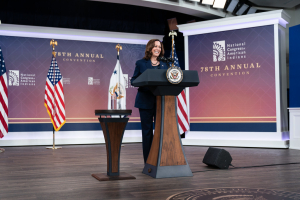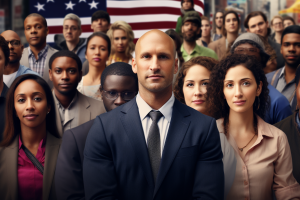Support migrant centric journalism today and donate

By Sanwar Ali:
Introduction
The H1B visa is a significant part of the United States immigration system, playing a crucial role in addressing the demand for skilled labor within the country, particularly in areas such as Science, Technology, Engineering, and Mathematics (STEM). This guide provides an in-depth analysis of the H-1B visa quota, the challenges faced by employers in filling up vacancies, and a comparison with similar schemes in countries such as the UK.
Understanding the H-1B Visa
The H-1B visa is a nonimmigrant visa category under the US visa system, designed to allow US companies to employ foreign professionals in specialized occupations. These occupations typically require at least a bachelor's degree or equivalent in a relevant field. The visa is granted for an initial period of three years, with the possibility of extension up to six years.
The H-1B Visa Quota
Each year, the US government sets a statutory cap on the number of H-1B visas issued. Currently, the cap stands at 65,000 visas per fiscal year, with an additional 20,000 visas reserved for foreign professionals who have graduated with a master's degree or higher from a US institution. This limitation is commonly referred to as the H1B quota.
The H-1B Visa Petition Process
Before a US employer can file a petition for an H-1B worker, they must first certify that the employment of the foreign professional will not negatively impact the wages and working conditions of US workers in similar roles. This is done through the Labor Condition Application (LCA) certified by the Department of Labor (DOL). The employer must also notify their existing workforce about their intention to hire an H-1B worker.
The H-1B Visa Lottery
Due to the high demand for H-1B visas, the quota is usually exceeded within a short period each year. When this occurs, the United States Citizenship and Immigration Services (USCIS) implements a lottery system to randomly select the petitions that will be processed. Each employer is required to register for the lottery electronically and pay a $10 fee for each registration.
The Impact of H-1B Workers on the US Economy
The presence of H-1B workers in the US labor market has several positive impacts on the economy. Among them are the creation of new job opportunities for native-born workers, increased consumer demand due to spending and investment by immigrant workers, and the fostering of innovation and economic growth.
Challenges for Employers in Filling Vacancies
Despite the benefits of the H-1B visa program, employers face significant challenges in filling vacancies due to the limited number of visas available. This is especially true in the STEM fields, where the demand for skilled professionals often outstrips the supply. This has led to intense competition among employers, with many unable to secure the talent they need to drive their businesses forward.
The H-1B Visa Quota System: A Comparison with the UK's Skilled Worker Visa Scheme
Unlike the US, the UK does not impose a quota on its primary scheme for bringing in overseas workers, the Skilled Worker visa scheme. There is also no equivalent to the US's LCA and prevailing wage request in the UK. The absence of such restrictions makes the UK's system more flexible, potentially offering a more attractive option for skilled foreign workers.
The Debate Around the US Temporary Worker Schemes
The H-1B visa program and other temporary worker schemes have been a subject of debate in the US. Some labor unions and political groups argue that these programs may lead to job displacement and wage depression for US workers. However, research suggests that H-1B workers complement rather than compete with US workers, and their presence may even lead to increased employment opportunities.
The Role of H-1B Workers in the COVID-19 Pandemic
The COVID-19 pandemic highlighted the critical role of H-1B workers in responding to national emergencies. Many of the scientists and healthcare professionals at the forefront of the pandemic response were present in the US on H-1B visas.
The Future of the H-1B Visa Program
Despite the challenges and debates surrounding the H-1B visa program, it remains a vital resource for US employers seeking to fill skill gaps in their workforce. The future of the program may see reforms aimed at making the process more efficient and responsive to the needs of the US labor market.
workpermit.com helps with US Work Visa: L1, H1B, E2, and O1 Visas
There are various types of US visas that individuals can apply for, depending on their circumstances. Some of the most common employment-based visas include:
L1 visa: This visa is for intracompany transferees who work in managerial or executive positions or have specialized knowledge.
H1B visa: This visa is for specialty occupations that require theoretical or technical expertise in specialized fields.
E2 visa: This visa is for investors who have made a significant investment in a US business and, management or essential skills employees. Only certain nationalities can apply.
O1 visa: This visa is for individuals with extraordinary abilities in the arts, sciences, education, business, or athletics.
Workpermit.com is a specialist visa services firm with over thirty years of experience dealing with visa applications. For more information and advice, please contact us on 0344 991 9222 or at london@workpermit.com(link sends e-mail)(link sends e-mail)





















